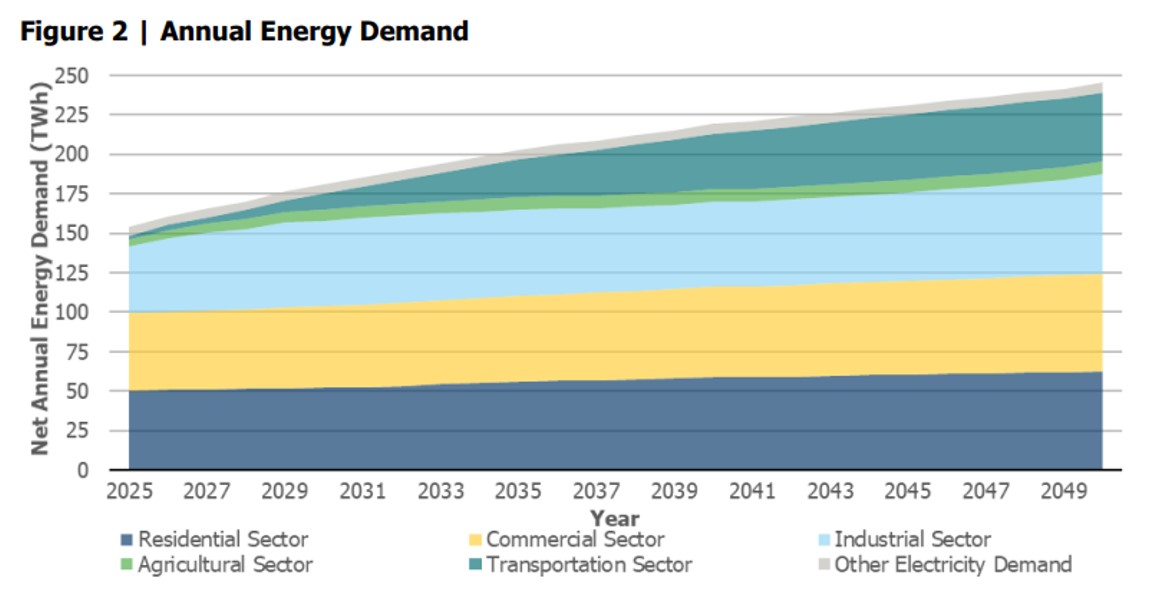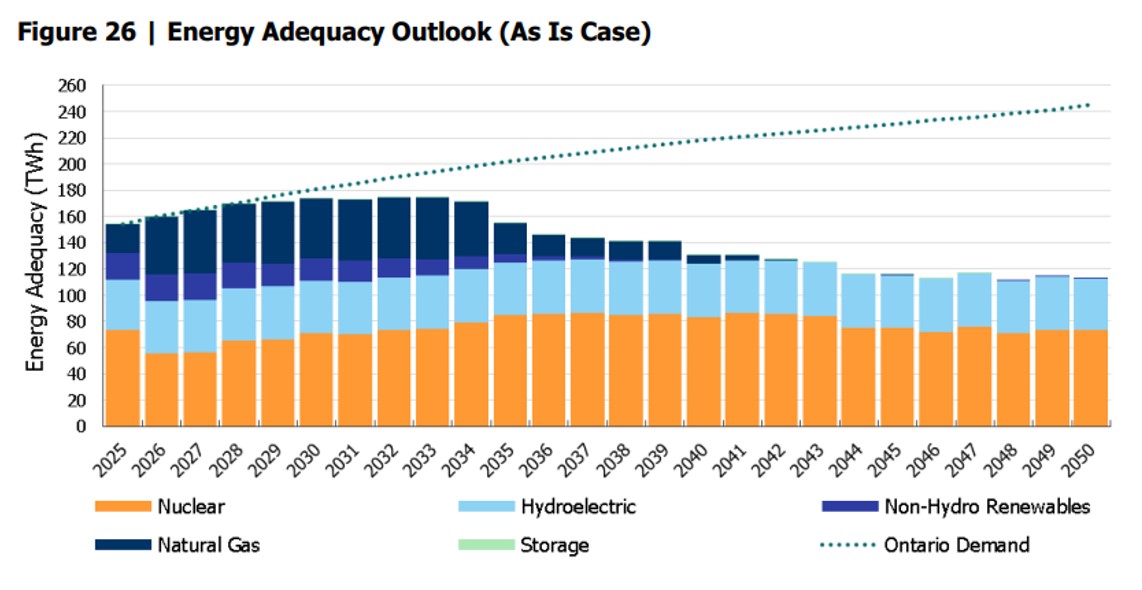IESO Releases 2024 Annual Planning Outlook
On March 19, 2024, the Ontario Independent Electricity System Operator (IESO) released its Annual Planning Outlook (APO) looking at Ontario’s electricity system needs for 2025-2050. The APO shows that electricity demand is forecast to increase steadily, with an increase of 60% by 2050. The APO indicates that efforts to secure needed additional electricity supply are proceeding well, but that there are large gaps in terms of generation and transmission capacity that will need to be addressed over time.
The key underpinning for the APO is the long-term demand forecast. Consistent with past APOs, the IESO is forecasting that demand will increase by around 2% per year to 2050. Key drivers of the demand increase are said to be economic and population growth, mining and steel industry electrification, and growth in electric vehicle industries. The IESO forecasts that Ontario will move from being a summer-peaking region to a dual-peaking region beginning in 2030, with summer and winter electricity peaks being comparable at that time. This change is attributed to charging of EVs, building space-heating electrification coinciding with the winter system peak, and reduced overall summer peaks with the effects of the enhanced conservation and demand management (CDM) efforts.
The table below, taken from the APO, reveals the sectors where demand growth is expected. It shows the transportation sector as being the largest “driver,” with roughly equal increases from other main sectors.

Notably, the demand forecast set out in the APO is meaningfully lower than the demand forecast set out in the IESO’s Pathways to Decarbonization Report from December 2022. Key reasons for the differences include assumptions in the Pathways study that have not yet materialized, including broad-scale building space heating electrification, broad-scale industrial sector fuel-switching for process heating from greenhouse gas-emitting fuels to electricity, and policy to pursue all estimated cost-effect achievable CDM program savings potential.
The APO’s supply outlook indicates that there are modest shortfalls to meet demand in the near-term, with increasing gaps over time. The IESO’s procurement processes are aimed at filling these gaps. The IESO notes that, along with increased generation (to meet new demand and to address retiring generation facilities), there will also be a need for substantial improvements and expansions to the bulk transmission system. The capacity challenge will be exacerbated if Ontario phases out natural gas generation, which currently represents the largest segment of generation capacity (around 27%). The size of the challenge is illustrated in the table below, taken from the APO, which shows the growing gap between currently known resources and forecast demand over time.

The APO describes the steps that the IESO plans to take to address the gap between capacity and demand over time. The IESO highlights that the future supply mix (as well as the future demand profile) will be highly dependent on the evolution and timing of government policy (both provincial and federal). Future APOs will reflect new government policy announcements, including the Government of Ontario’s response to the Report of the Electrification and Energy Transition Panel.
Clients rely on the Aird & Berlis Energy Group for trusted advice and skilled representation in a broad spectrum of energy-related projects. We regularly share relevant news and regulatory updates via our Energy Insider blog channel, providing valuable resources to our industry partners and clients.

